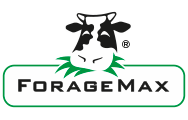Late heading
The late heading is appreciated for grazing fields to avoid overwhelming spring production resulting in decreased forage quality. The late heading allows a large spring window where the growth is essentially vegetative (leaves and leaf sheaths).
Diploid
Diploid perennial ryegrasses are more dense than tetraploids, producing dense swards with little room for weed invasion.
Main uses
Late heading varieties are preferred for grazing but surplus growth can be conserved as hay or silage if necessary. For nitrogen economy feeding quality adding white clover to a ryegrass mixtures is recommended.

- Late heading
- Diploid (2n)
- Suitable for grazing
- Excellent in mixtures with white clover
Find your contact person




